Need to fix a blurry photo? Here are the top 10 image sharpening and deblurring tools to help you turn those fuzzy pictures into clear, sharp images.
Takeaways
- Services like LetsEnhance.io and Claid.ai offer fast, automated image sharpening without technical skills.
- Tools like Adobe Photoshop and Lightroom provide in-depth control but may have a learning curve.
- Apps like Snapseed allow you to sharpen images directly from your smartphone.
- Gimp is the most robust option among totally free ones.
Top 10 Image Sharpeners
#1 LetsEnhance.io: Best Overall
LetsEnhance.io is an AI image enhancement tool that makes it easy to sharpen and deblur photos online. With advanced machine learning algorithms, it can unblur images and enhance details in seconds, requiring no technical skills.
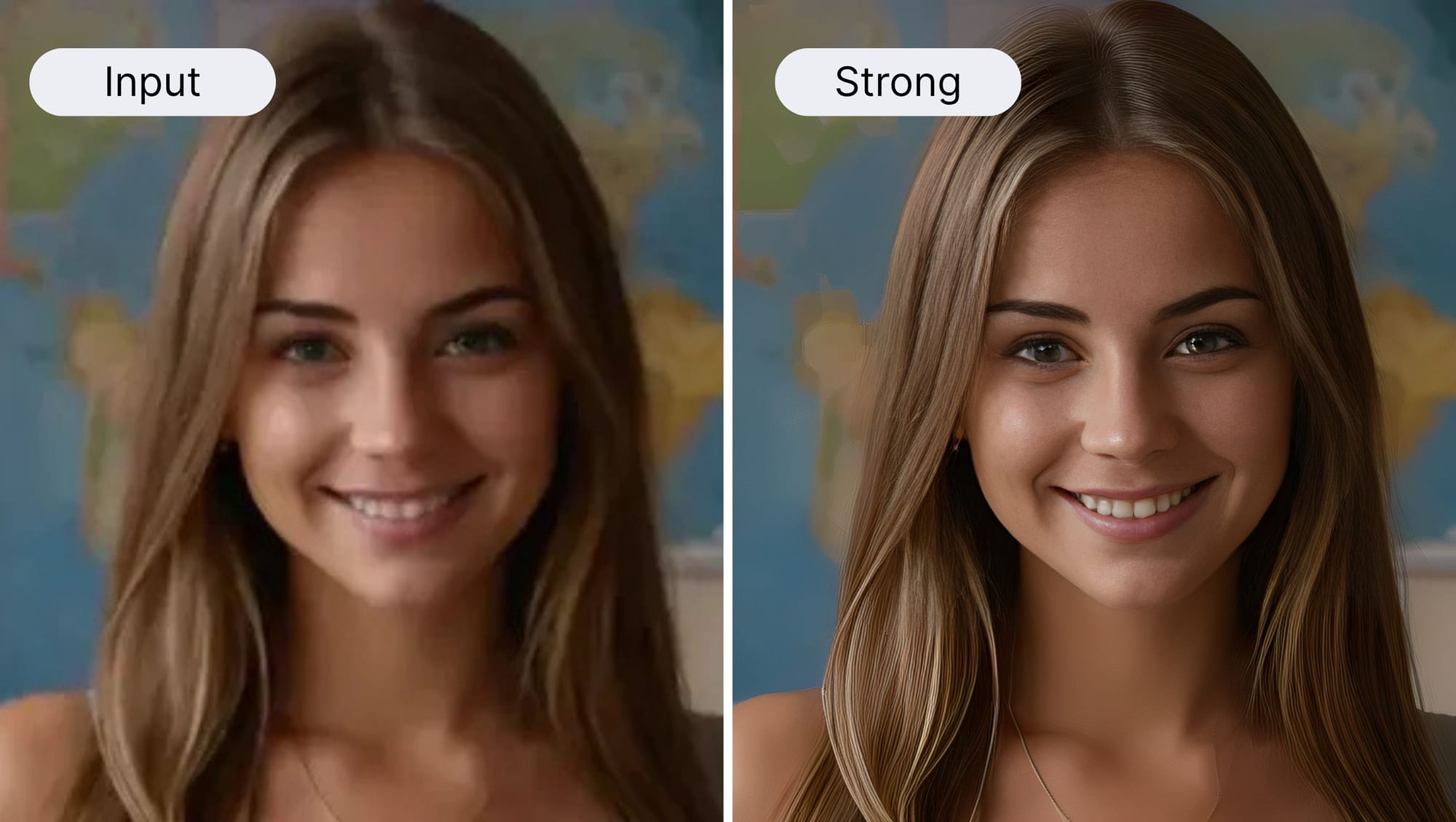
Key Features
- Strong Upscaler: AI tool that sharpens blurry images and enhances details instantly.
- User-Friendly Interface: Simple workflow suitable for all users.
- Customization Options: Turn on or off the Enhance faces toggle to get your desired outcome.
- Multiple Modes: Offers various upscaling options for different image types, including Gentle, Balanced, Ultra and Old Photo.
- Batch Processing: Upload and process multiple images at once.
Pros:
- Fast and easy with no technical expertise required.
- Effective at unblurring and enhancing details.
- Additional modes for various image types.
Cons:
- Limited free usage; subscription needed for extended use.
Pricing
Free 10 credits with plans starting from $9 per month.
#2 Claid.ai: Best for Product Photos
Claid.ai by LetsEnhance is designed specifically for eCommerce businesses to enhance and optimize product photos. It automatically sharpens images, adjusts colors, and removes backgrounds, ensuring your product images meet the standards and attract customers.
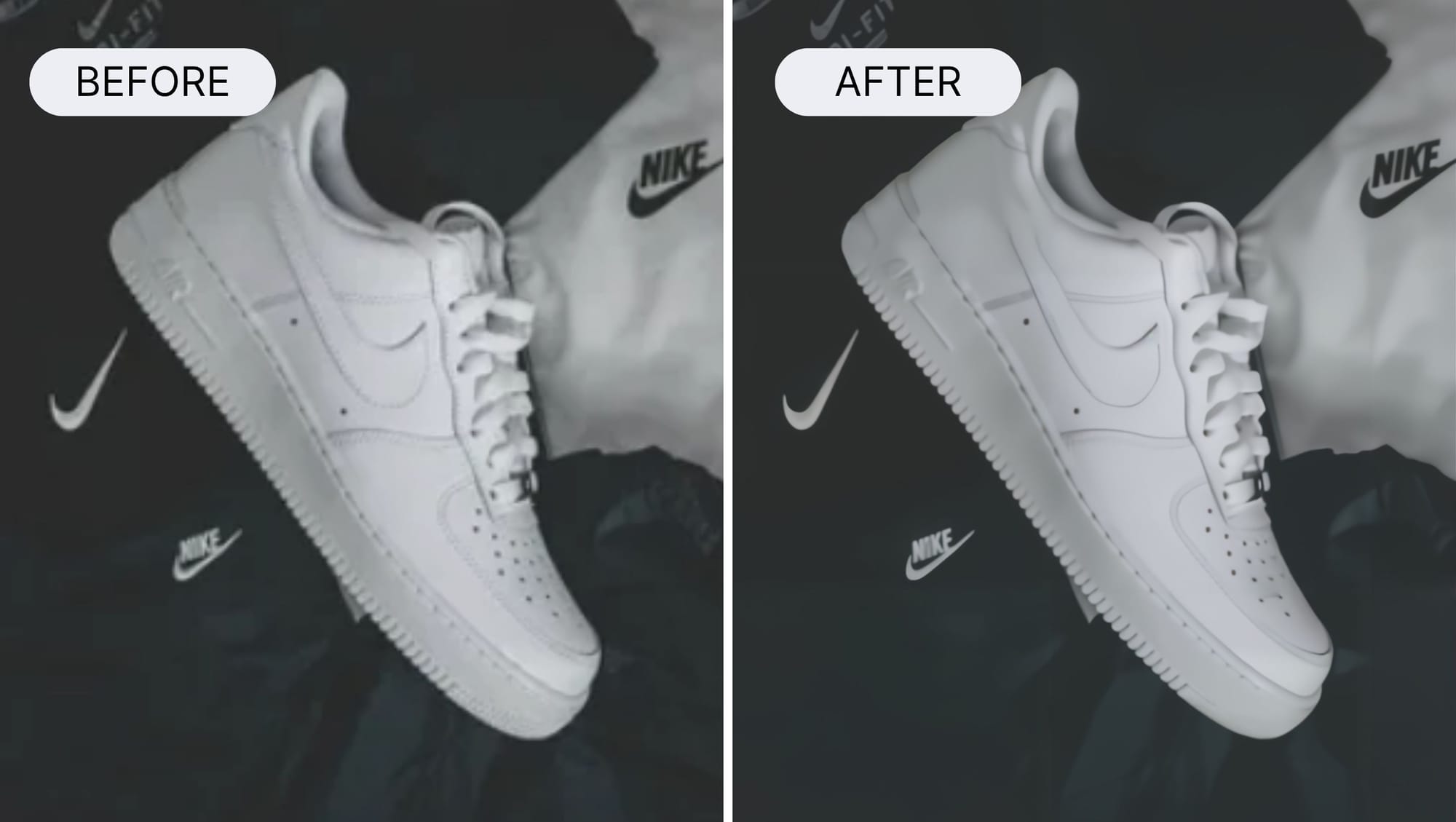
Key Features
- AI-Powered Sharpening: Enhances product photos by reducing blur, increasing sharpness and removing unnecessary artifacts while preserving the original structure.
- Complete Suite: Upscale images, remove backgrounds, and create product photos with the new AI Photoshoot in just one place.
- Consistent Quality: Ensures a uniform, professional look.
- API: Available API that enables you to edit and generate images at scale.
Pros:
- Tailored for eCommerce product photos.
- Automates image enhancement, background removal, and AI-powered product photoshoot creation.
- Improves conversion rates with better images.
Cons:
- Focused on product images; not for general use.
Price
Available free trial with 5 uploads. Subscriptions start $9/month.
#3 Adobe Photoshop: Best for Professionals
Adobe Photoshop is the industry-standard software for professional image editing, offering comprehensive tools for sharpening and deblurring images with precision. It provides unparalleled control over the editing process, ideal for users who require detailed adjustments.
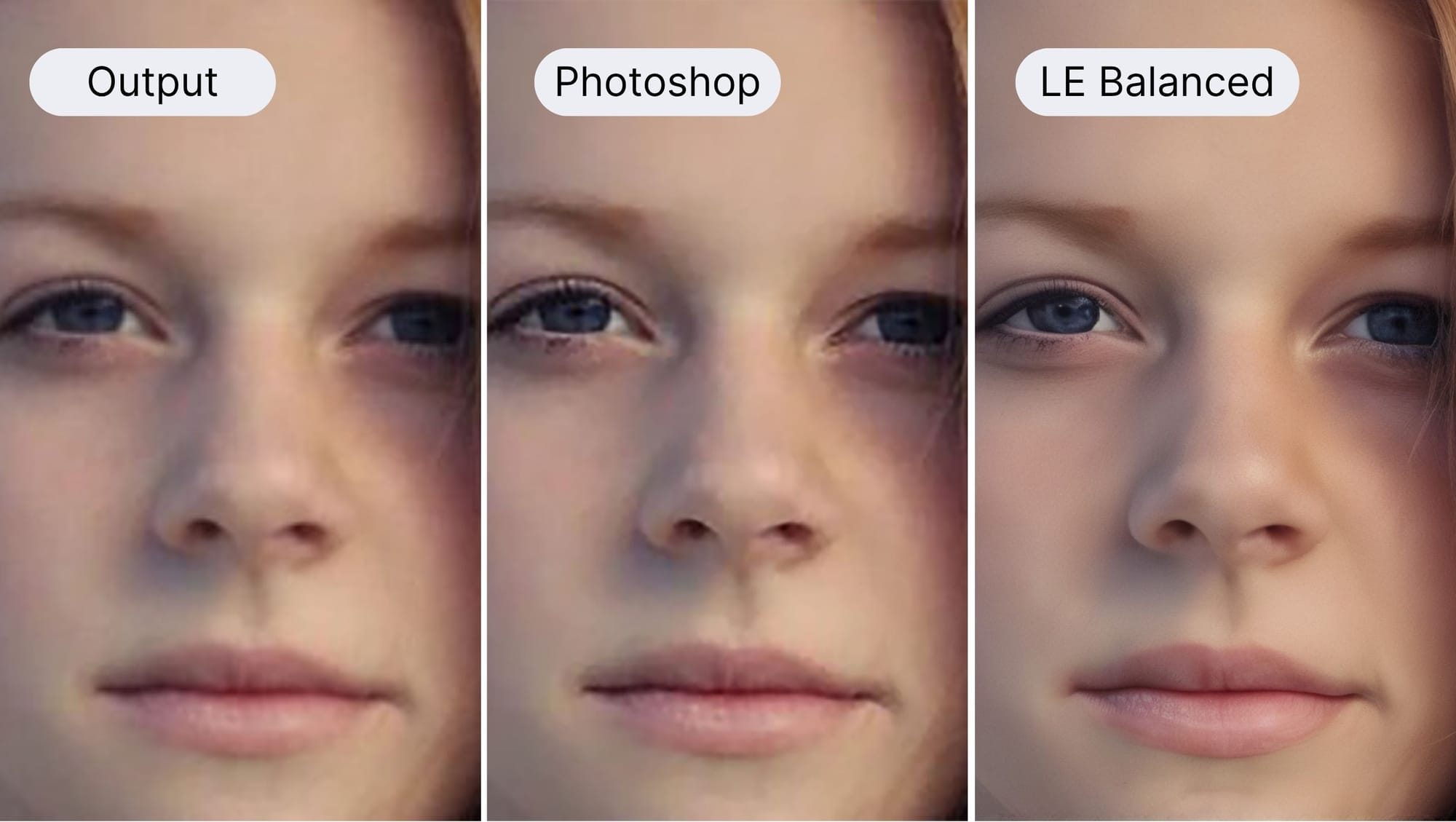
Key Features
- Includes Unsharp Mask, Smart Sharpen, and Shake Reduction filters.
- Allows for granular adjustments of sharpening parameters.
- Use layers and masks to preserve original images.
- Beyond sharpening, it offers a wide range of editing and creative tools.
- Seamlessly works with Lightroom and other Creative Cloud apps.
Pros
- Highly versatile with professional-grade features.
- Provides precise control over image enhancements.
- Regular updates with new features.
- Large community and abundant tutorials available.
Cons
- Steep learning curve for beginners.
- Subscription-based pricing can be expensive.
- Requires a powerful computer to run smoothly.
Pricing
Available 7-day free trial which gives enough time to explore the tool.
- Photography Plan: $19.99/month, includes both Photoshop and Lightroom.
- Single App Plan: $22.99/month for Photoshop & Adobe Express.
#4 Adobe Lightroom: Best for Photographers
Adobe Lightroom is a photo editing and management software tailored for photographers. It offers effective sharpening tools within a streamlined workflow, allowing users to edit, organize, and share photos efficiently.
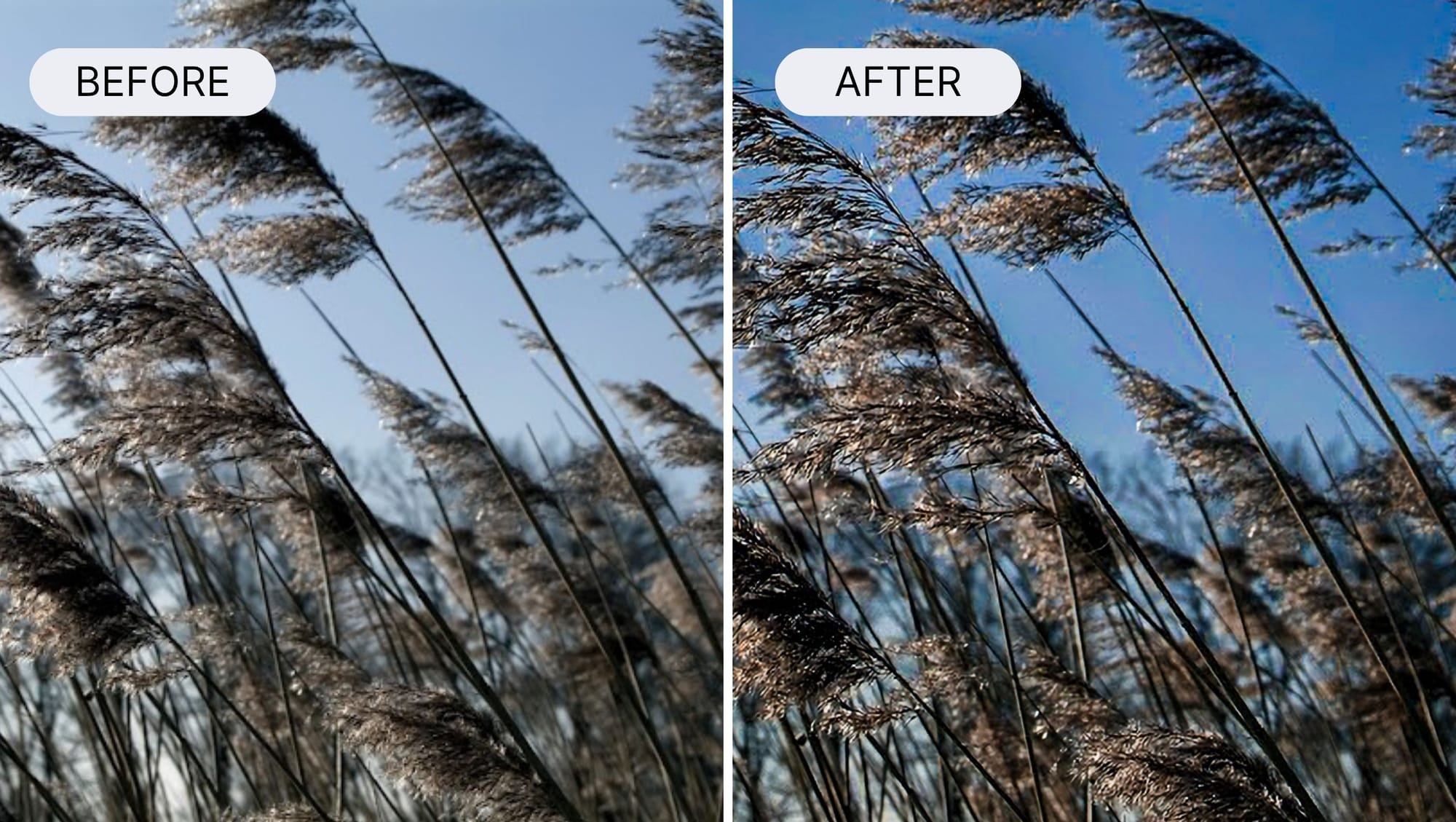
Key Features
- Includes Detail Panel: Adjust sharpening, noise reduction, and clarity.
- Non-Destructive Editing: Original images remain unaltered.
- RAW Processing: Supports RAW files for maximum image quality.
- Photo Management: Organize and categorize photos with ease.
- Cloud Sync: Access your photos across devices.
Pros
- Easier to learn compared to Photoshop.
- Designed specifically for photo editing and management.
- Seamless integration with Photoshop for extended capabilities.
- Mobile apps available for on-the-go editing.
Cons
- Less versatile than Photoshop for complex editing tasks.
- Subscription required.
- Advanced features may still require some learning.
Pricing
- Available 7-day free trial.
- Photography Plan: $19.99/month, includes both Lightroom and Photoshop.
- Lightroom Plan: $11.99/month, includes Lightroom with 1TB cloud storage.
- GIMP (GNU Image Manipulation Program) is a free, open-source image editor that offers a range of tools for sharpening and deblurring images. It serves as a cost-effective alternative to commercial software.
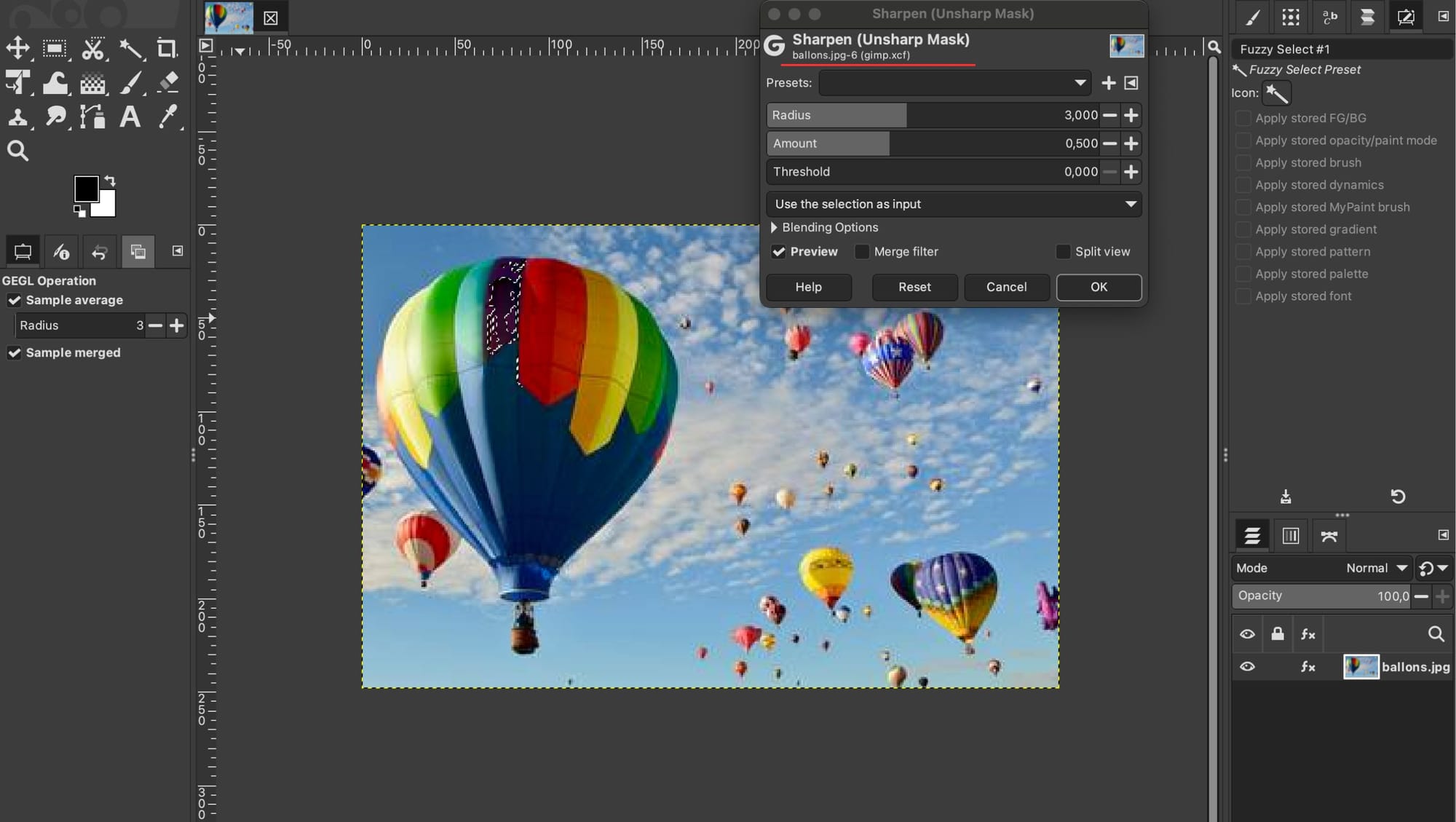
Key Features
- Sharpening Filters: Includes Unsharp Mask and High-Pass filters.
- Customizable Interface: Personalize your workspace and tools.
- Plugin Support: Extend functionality with community-developed plugins.
- Cross-Platform Compatibility: Available for Windows, macOS, and Linux.
Pros
- Completely free to use.
- Community-driven with regular updates.
- Suitable for both beginners and advanced users.
- Supports a wide range of file formats.
Cons
- User interface can be less intuitive.
- Not as powerful or polished as commercial alternatives.
- Limited official support; relies on community forums.
Pricing
- Free: Open-source software available for download at no cost.
#6 Snapseed: Best Mobile Solution
Snapseed is a professional-quality photo editing app developed by Google for mobile devices. It offers powerful tools, including sharpening and structure adjustments, all accessible through an intuitive touch interface.
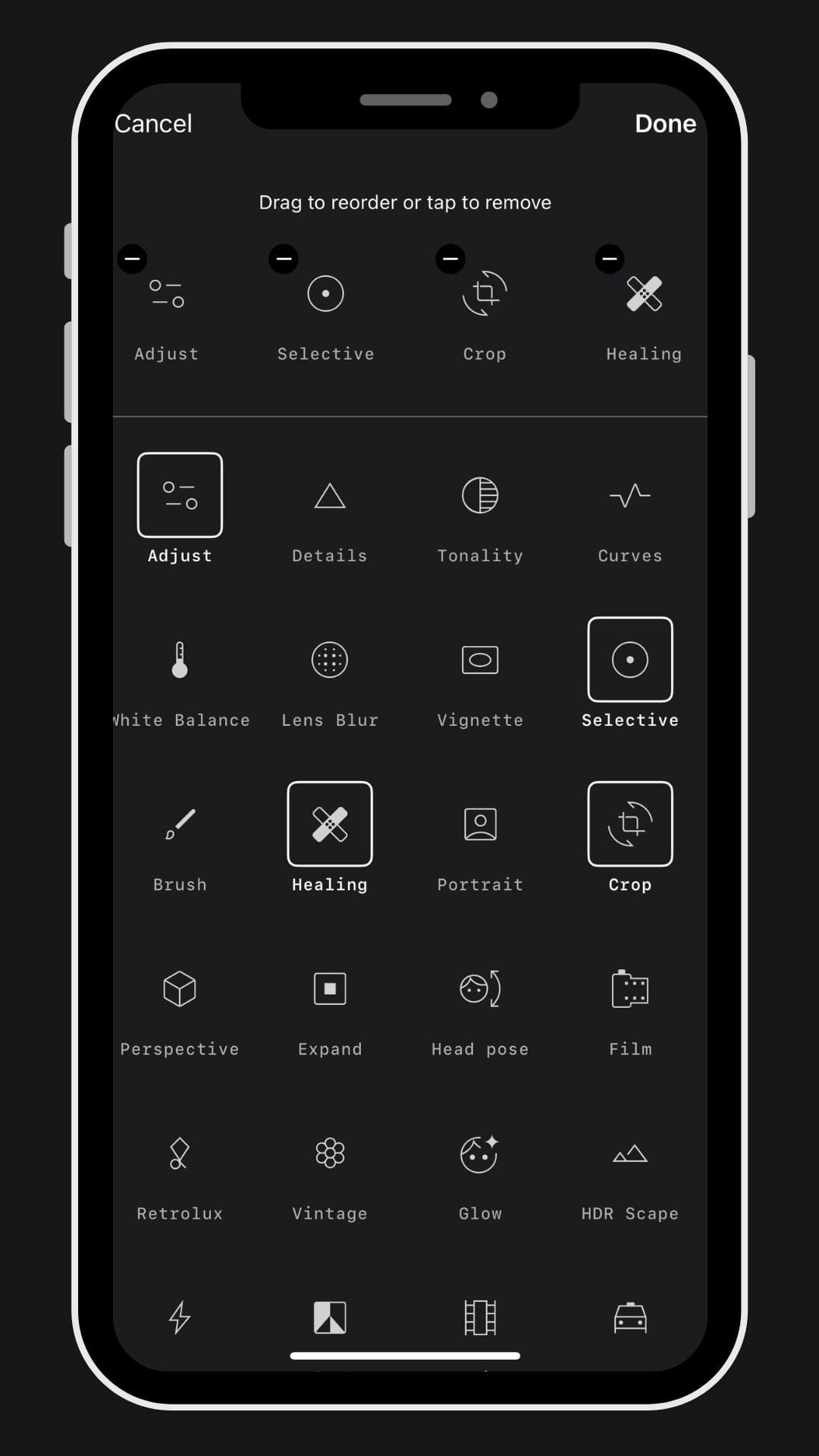
Key Features
- Details Tool: Sharpen images and enhance structure.
- Selective Adjustments: Edit specific areas within an image.
- RAW Support: Edit RAW files directly on your mobile device.
- User-Friendly Interface: Easy to navigate and use.
Pros
- Completely free with no ads.
- Powerful editing tools for a mobile app.
- Offline editing; no internet connection required.
- Available on both iOS and Android devices.
Cons
- Limited compared to desktop software.
- Small screen size may hinder detailed editing.
- No batch processing capabilities.
Pricing
- Free: Available for download on the App Store and Google Play.
#7 Topaz Photo AI
Topaz Photo AI is one of the first AI-powered tools dedicated entirely to fixing image softness, motion blur, and missed focus. As of 2025, it has been officially merged into Topaz Photo AI, where its sharpening technology continues to evolve under the new “Sharpen” and “Super Focus” modules. While still usable as a legacy standalone app, it’s no longer actively updated.
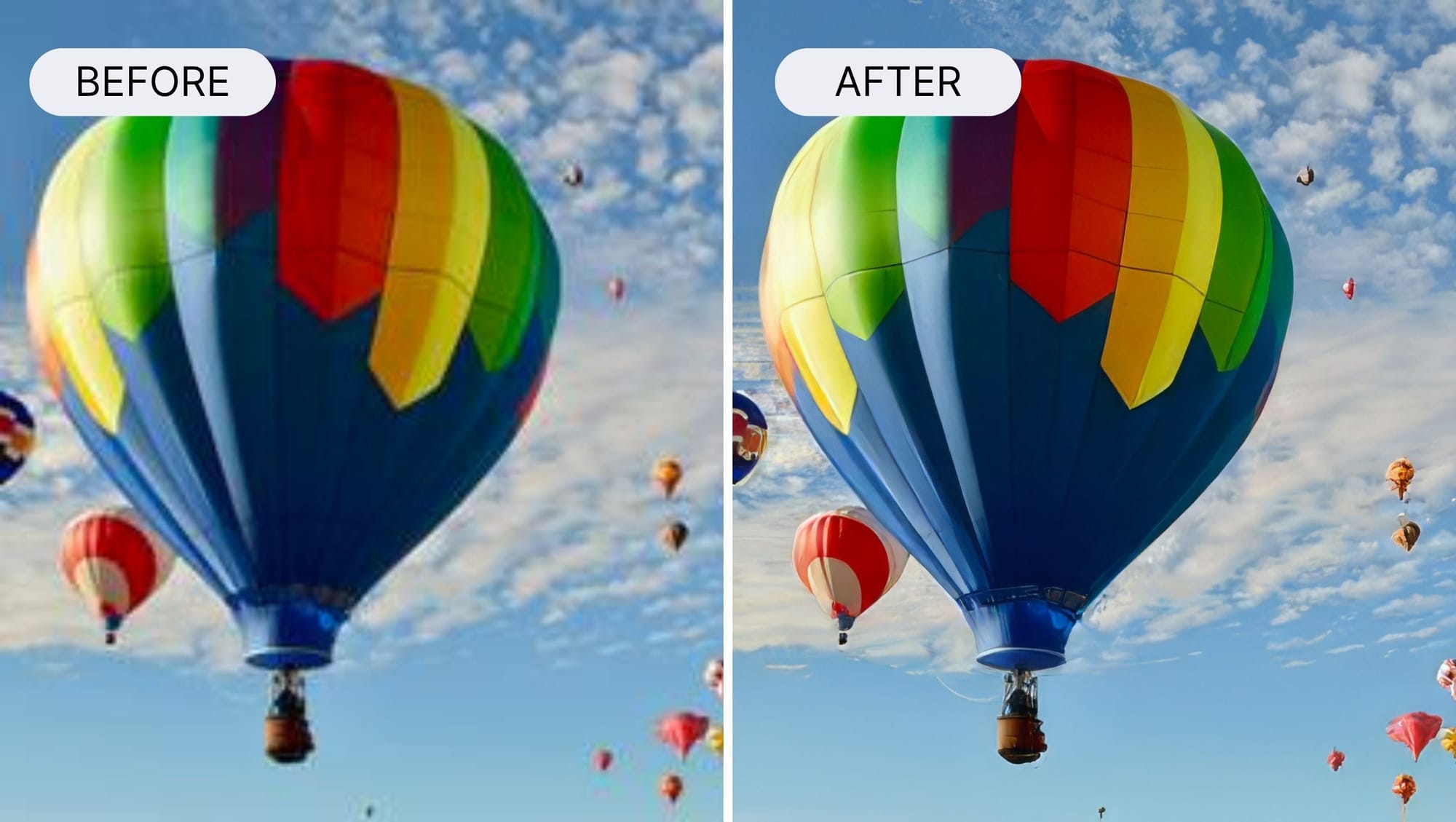
Key Features
- Three Sharpening Modes:
- Sharpen: General edge and texture enhancement.
- Stabilize: Corrects motion blur caused by camera shake.
- Focus: Restores slight focus errors in subjects or lenses.
- The Super Focus model in Photo AI improves detail recovery on severely soft or out-of-focus areas.
- AI-Powered Processing: Learns from millions of images to improve results.
- Batch Processing: Enhance multiple images simultaneously.
- Standalone or Plugin: Works independently or as a plugin for Photoshop and Lightroom.
Pros
- Effective at reducing different types of blur.
- User-friendly with straightforward controls.
- Offers a free trial to test before purchasing.
Cons
- Lesser clarity boost compared to LetsEnhance as results may seem unnatural and incoherent.
- Heavy GPU usage; performance can lag on lower-end hardware.
- Standalone Sharpen AI is no longer updated and may show compatibility issues on newer OS versions.
- Price tied to a larger suite, making it less ideal for those seeking a single-purpose tool.
Pricing
- Offers 10 free uploads.
- Topaz Studio: 37$/month
- Topaz Studio Pro: 75$/month
#8 Exposure Software
Exposure Software offers advanced photo editing tools, including sharpening and detail enhancement, suitable for professional photographers. It can function as a standalone application or as a plugin for Photoshop and Lightroom.

Key Features
- Detail Panel: Adjust clarity, sharpness, and micro-contrast.
- Film Emulation Presets: Apply realistic film effects.
- Non-Destructive Editing: Preserve original images with layers.
- Efficient Workflow: Intuitive interface designed for photographers.
Pros
- High-quality sharpening and detail enhancement tools.
- User-friendly with a well-organized interface.
- Supports RAW files from various cameras.
- Offers the usual non-destructive workflow and layer/masking flexibility.
- Usable as a plugin or standalone, although with caveats around newer host software.
Cons
- The update frequency is low and major feature additions seem rare,
- Higher price point compared to some alternatives.
- Less known than mainstream software.
- May offer more features than needed for basic sharpening.
Pricing
- 30-day free trial for Exposure X7
- Exposure X7 Bundle: 149$
- Exposure X7 One-Time Purchase: $129.
9. Luminar Neo
Luminar Neo is an AI-driven photo editor that simplifies complex editing tasks. It offers tools to sharpen images and improve overall quality with minimal effort, making it suitable for both beginners and professionals.
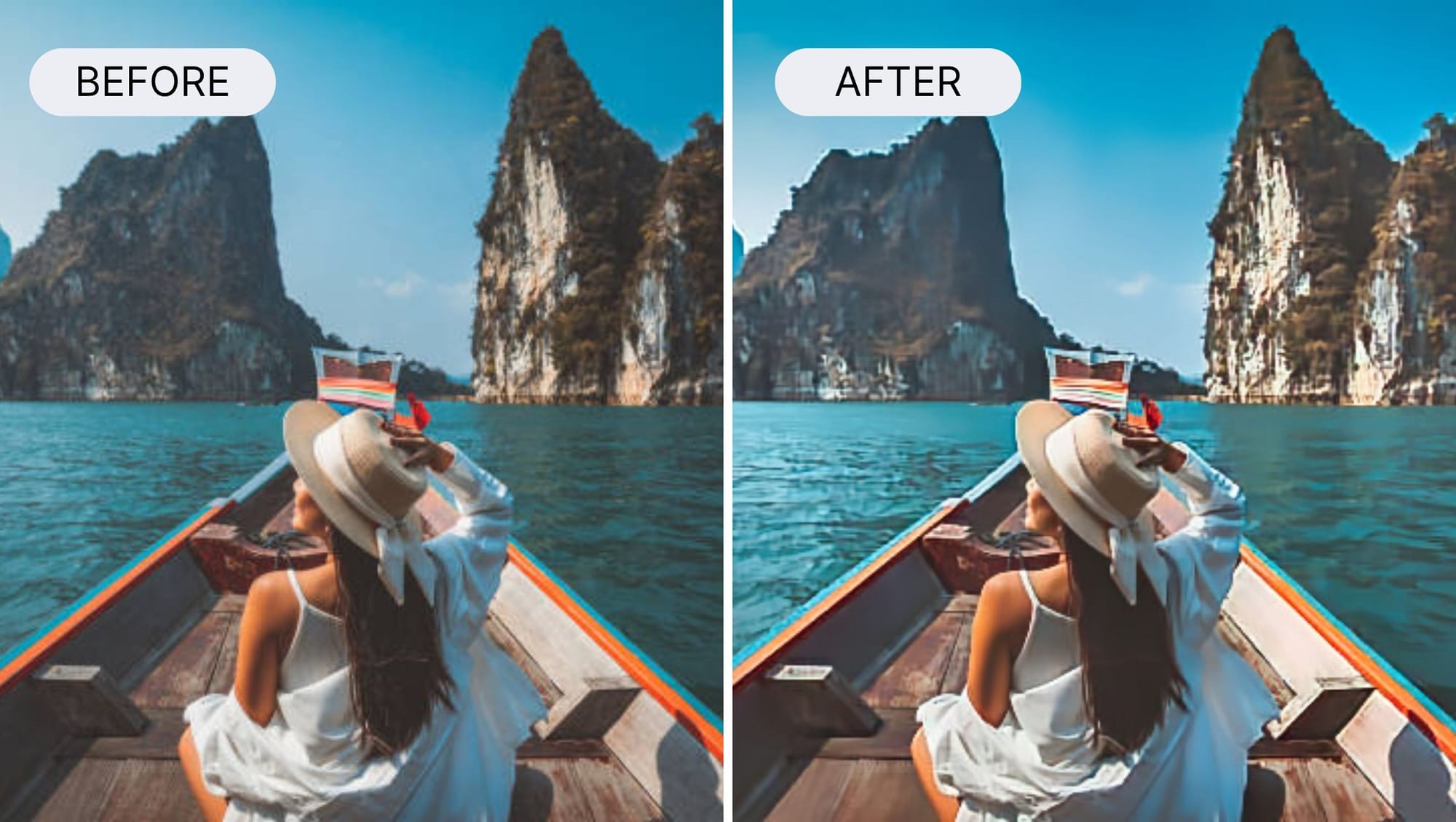
Key Features
- AI-Powered Tools: Includes Enhance AI, Supersharp AI, Noiseless AI, and Relight AI for intelligent, one-click corrections.
- Manual Editing Precision: Offers layer-based editing, masking, and granular control over every adjustment.
- Advanced Retouching: Tools for removing dust, scratches, and imperfections manually.
- User-Friendly Interface: Designed for ease of use.
- RAW Support: Processes RAW files for maximum flexibility and image quality.
- Plugin Integration: Works as a plugin for Lightroom and Photoshop, enhancing existing workflows.
Pros
- Combines powerful AI automation with detailed manual control.
- Suitable for users of all skill levels.
- Non-destructive workflow allows experimentation without losing the original.
- Regular updates with new features.
- One-time purchase option (no mandatory subscription).
Cons
- Not as comprehensive as Photoshop for complex tasks.
- Requires installation and local processing power.
- More time-consuming compared to web-based AI tools.
- Steeper learning curve for beginners.
- Performance may vary depending on hardware.
Pricing
- 7-day free trial available
- Perpetual licenses:
- Desktop: $79/year
- Cross-device: $109/year
- Max License: $129/year
- Picsart
Picsart is an all-in-one creative platform that combines powerful AI editing with an easy-to-use interface, making it accessible for both beginners and professionals creators. Its AI Enhance and AI Sharpen offer quick ways to restore clarity, boost detail, and improve image resolution directly in the browser or app.

Key Features
- AI Enhance Tool: Automatically fixes blurry or low-quality photos by recovering lost details and improving sharpness.
- AI Sharpen & Upscale: Uses machine learning to increase image clarity and resolution without noticeable artifacts.
- Comprehensive Editing Suite: Includes filters, background removal, color correction, overlays, and text tools.
- Cross-Platform Availability: Works seamlessly across web, iOS, and Android devices.
- Templates & Creative Assets: Thousands of design elements, stickers, and effects for social media or marketing use.
Pros
- Intuitive and beginner-friendly interface.
- AI-powered enhancement delivers fast and impressive results for everyday use.
- Works entirely online or through the mobile app without requiring installation.
- Integrated into a complete design suite, making it easy to edit and publish in one place.
- Regularly updated with new AI features.
Cons
- Not a dedicated sharpening tool and results may look slightly artificial.
- Lacks fine-tuning options for intensity or mask-based sharpening.
- Advanced features often locked behind a subscription.
- Requires an internet connection for AI tools to work.
Pricing
- 7-Day Free Trial available for new users.
- Picsart Plus: $5/month — adds higher resolution exports and more AI credits.
- Picsart Pro: $7/month — unlocks all AI tools, premium assets, and priority processing.
FAQ
What is the best free image sharpening tool?
For completely free options, GIMP and Snapseed remain top choices, but take into account that the quality may be low.
Among low-cost AI options, LetsEnhance.io, Claid.ai and Picsart are the best. These tools are affordable, easy to use and perfect for quick online sharpening and resolution fixes.
How can I sharpen a blurry picture?
- AI-powered tools like LetsEnhance.io,offer quick and easy solutions without requiring technical skills. Upload your image, select the appropriate settings, and let the AI enhance your photo.
- Professional software like Adobe Photoshop provides detailed control for users comfortable with advanced editing techniques.
How-to video demonstrates Ultra upscaler interface and sharpening workflow
How do AI image sharpening tools work?
AI tools use machine learning algorithms trained on vast datasets to analyze and enhance images. They predict and reconstruct details in blurry areas, effectively sharpening the image.
What is the best AI tool to sharpen images?
LetsEnhance.io is a top choice for general image sharpening with AI. For product photos in eCommerce, Claid.ai offers specialized AI-powered sharpening and optimization.
Can sharpening fix out-of-focus or motion-blurred photos?
AI sharpening tools can recover moderate focus errors or motion blur by reconstructing details based on visual patterns. For best results, use tools that have dedicated recovery and stabilization models rather than general editing tools. You can try LetsEnhance's Balanced, Gentle, Strong or Ultra models for better results.


